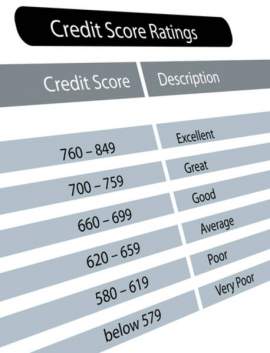
A Guide to Interest Free Credit Cards

What are
Interest-Free Credit Cards?
Interest-Free Credit Cards allow for the
individual owners to become eligible to enjoy the absence of applicable
interest with regard to the outstanding balance associated with a credit card.
Interest is defined as an expressed and established percentage of the gross
balance of Credit Cards.
Interest is
considered to be a compensatory method undertaken by the credit institution as
a result of furnishing an individual with a credit card. However, the notion of
Interest-Free Credit Cards may be misleading. While individuals may enjoy
timeframes in which interest is not incurred, credit cards completely absent of
interest are rare.
Standards and Practices of Credit Terms Specific
to Interest-Free Credit Cards
In most cases, the following two standards and
practices are specific to Interest-Free Credit Cards:
The notion of Interest-Free Credit Cards may exist
within the initial approval of a credit card. In certain cases, lending
institutions may allow individual applicants approved for the receipt of credit
cards to undertake a year of what is considered to be ‘0% Annual Percentage
Rate (APR)’, which disallows any interest incurred for the first year of
ownership.
The second notion of Interest-Free Credit Cards
may exist with regard to a ‘Balance Transfer’. A balance transfer involves the
transfer of one outstanding balance from one credit card to a new credit card. Upon
an approved transfer, individuals will be eligible to engage in a ‘grace
period’ within which an APR is not applicable to the new credit card.
Interest-Free Credit Cards: Profile and Background
The following details are inherent within the
financial structure and legal ideology of Interest-Free Credit Cards:
Interest-Free Credit Card Interest and Annual
Percentage Rates
As previously mentioned, the absence of interest
exists on a temporary basis. Subsequent to the termination of a grace period,
standard APR rates will become applicable. The most attractive interest rates
range from 2% to 5%, while the least attractive can range upwards from 15% to
20%.
The Repayment Process of Interest-Free Credit
Cards
With regard to the repayment process of
Interest-Free Credit Cards, the following terms may be applicable:
Despite its name, Interest-Free Credit Cards are
required to be repaid in the fashion expressed by the lending institution. Individuals
who have surpassed their respective credit limit will be unable to use their
credit card until a sufficient repayment is furnished.
Interest-Free Credit Cards: Legality
Interest-Free Credit Cards will typically fall
under the jurisdictions of both Finance Law and Commercial Law.
Finance Law is the legal specialty regulating and
overseeing legislation applicable to the exchange and the circulation of monies.
This takes place in both transfer activity undertaken involving hard currency,
as well as Interest-Free Credit Cards.
Commercial Law is the legal field that enacts the
regulatory oversight of standards and practices occurring within the commercial
marketplace. With regard to Interest-Free Credit Cards, statutory legislation is
undertaken within the precepts of Commercial Law deterring any nature of
predatory lending or financial exploitation.
Contingency Plans in the Event a Rejected
Interest-Free Credit Card Application
In the event that your application for the receipt
of Interest-Free Credit Cards has been rejected, additional options may exist
for your consideration. Prompt repayment, responsible usage, and the compliance
with terms of service will typically result in increased credit limits and
raised credit scores. Individuals interested in applying for credit cards are
encouraged to contact legal and financial professionals in order to better
understand both the risks and ramifications implicit within any nature of
credit cards.
NEXT: A Guide to Low Interest Credit Cards




















